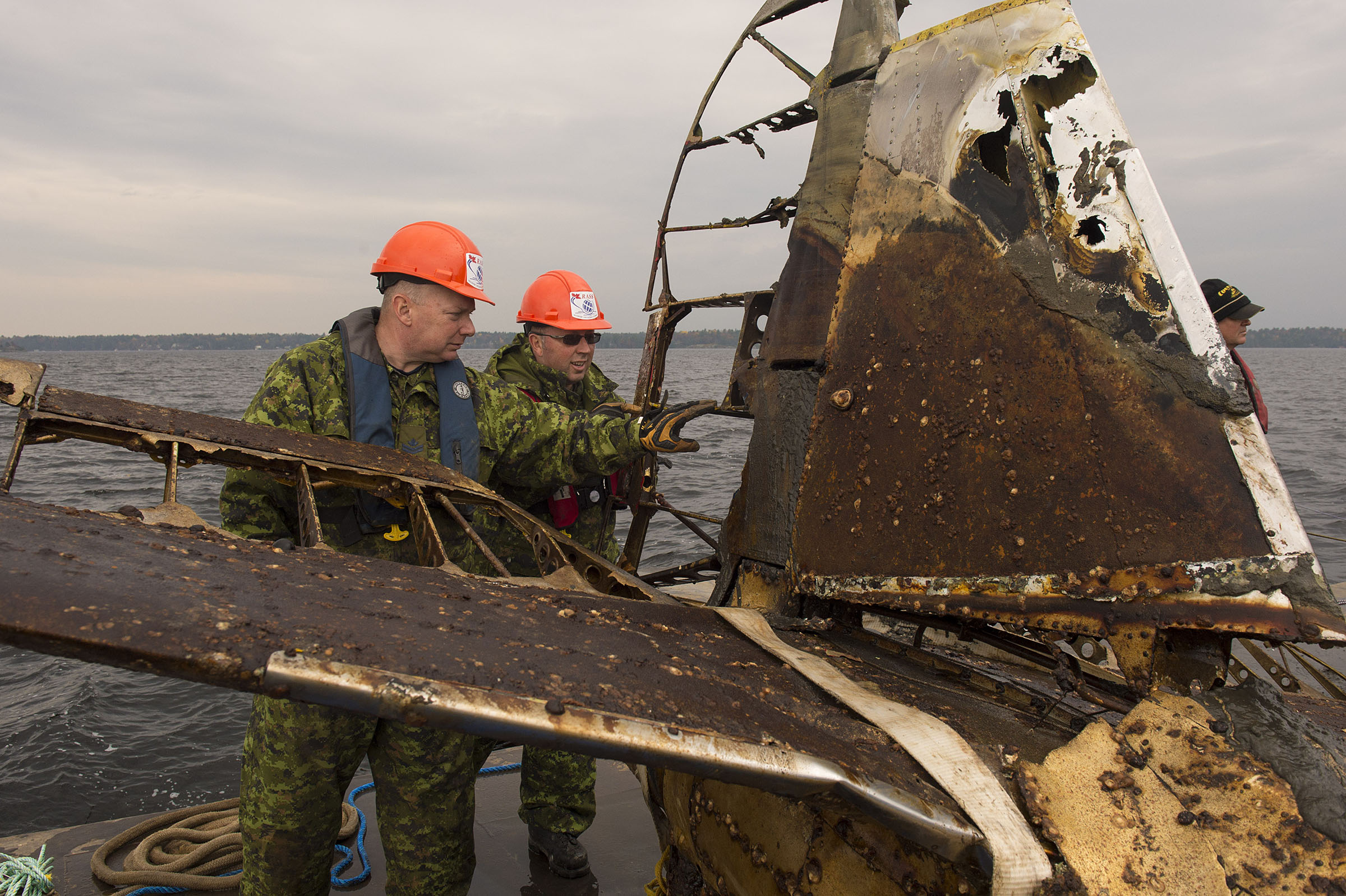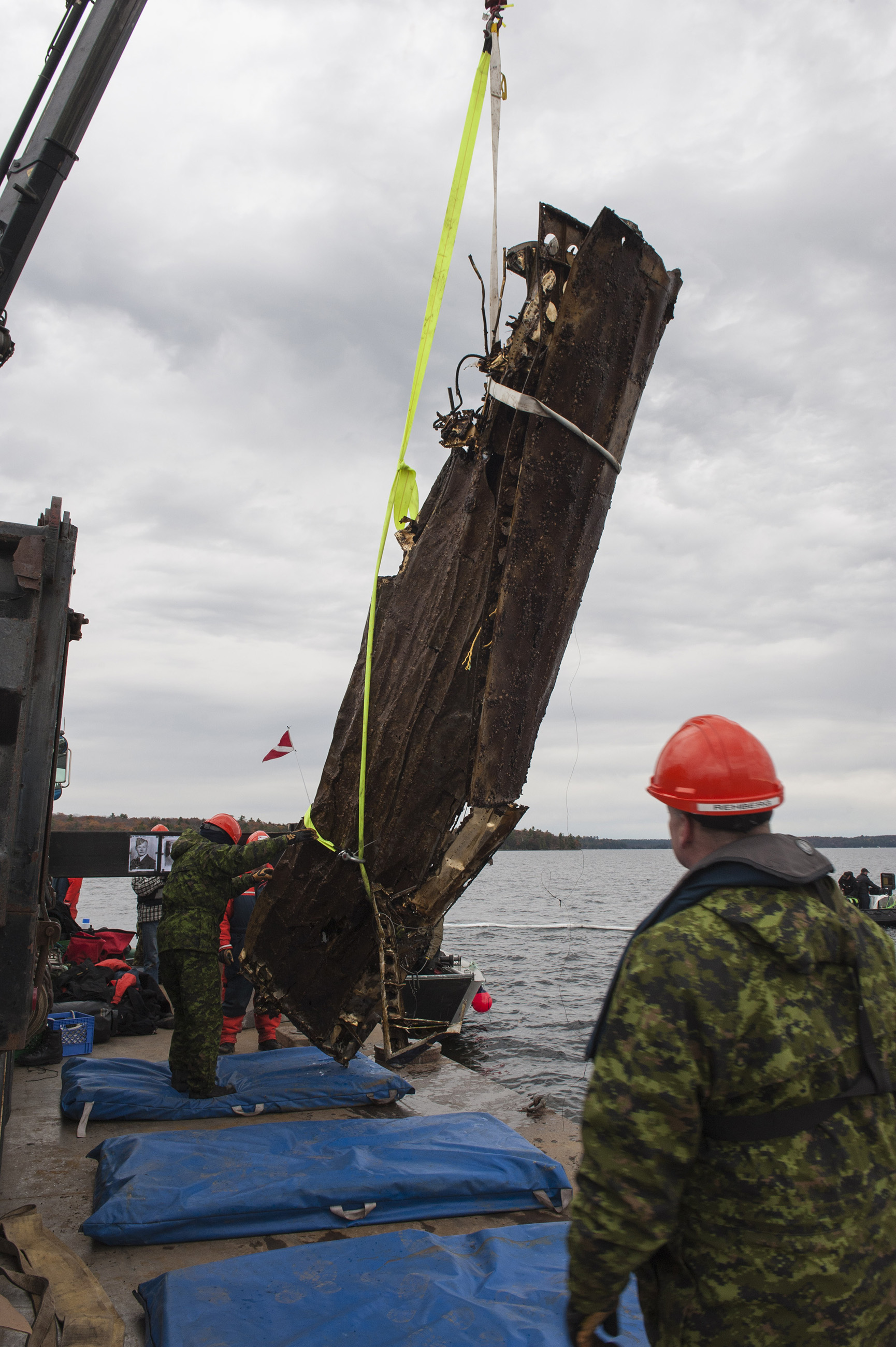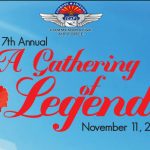Photo: MCpl Roy MacLellan, 8 Wing Imaging
TN2014-0669-J0033
An ultra-rare Northrop Nomad is slowly emerging from the frigid waters of Lake Muskoka near Bracebridge, Ontario. The Nomad was an export version of a US Army Air Corps A-17A, a small number of which ended up with the Royal Canadian Air Force in WWII instead of their original customer in France, following that country’s seizure by Germany. None of the Canadian Nomads were known to have survived, however as many of our readers may know, Ontario Provincial Police divers discovered the wreck of RCAF Nomad #3521, along with the remains of her crew, in July, 2010. A subsequent dive by the Royal Canadian Navy’s Fleet Diving Unit (Atlantic) in October, 2012 saw the recovery of the two crewmen, RCAF pilot LAC Ted Bates and RAF pilot Flt.Lt. Pete Campbell, their personal effects, and three .303 machine guns. Campbell and Bates came to grief during a blizzard on December 13th, 1940, when their Nomad collided with another, while they were on a search and rescue mission for a further missing Nomad. The two fallen airmen were finally able to receive a proper military funeral, which their families held in Guelph, Ontario on September 13th, 2013.
Given the rarity of the aircraft, and that it was relatively intact, albeit in five large pieces, many of us hoped that the Canadian authorities would agree to recover the wreck. Today has seen the beginning of the recovery process as the first major sections rose up from the lake, including the rear fuselage and tail, a wing, undercarriage, and even an additional .303 machine gun. The recovery crew expects the rest of the aircraft to come up over the next nine or ten days. The aircraft will then go to the National Air Force Museum of Canada in Trenton, Ontario where it will likely receive a full restoration in the coming years to serve testament to her two fallen pilots, and all the others who gave their lives in the name of freedom for Canada.
More videos and picture of the recovery can be found HERE.


























